Here's a go at this using symfit. As an example I choose to sample from a bivariate normal distribution with no covariance.
import numpy as np
import matplotlib.pyplot as plt
from symfit import Model, Fit, Parameter, Variable, integrate, oo
from symfit.distributions import Gaussian
from symfit.core.objectives import LogLikelihood
# Make variables and parameters
x = Variable('x')
y = Variable('y')
m = Variable('m')
x0 = Parameter('x0', value=0.6, min=0.5, max=0.7)
sig_x = Parameter('sig_x', value=0.1)
y0 = Parameter('y0', value=0.7, min=0.6, max=0.9)
sig_y = Parameter('sig_y', value=0.05)
pdf = Gaussian(x=x, mu=x0, sig=sig_x) * Gaussian(x=y, mu=y0, sig=sig_y)
marginal = integrate(pdf, (y, -oo, oo), conds='none')
print(pdf)
print(marginal)
model = Model({m: marginal})
# Draw 10000 samples from a bivariate distribution
mean = [0.59, 0.8]
cov = [[0.11**2, 0], [0, 0.23**2]]
xdata, ydata = np.random.multivariate_normal(mean, cov, 10000).T
# We provide only xdata to the model
fit = Fit(model, xdata, objective=LogLikelihood)
fit_result = fit.execute()
print(fit_result)
xaxis = np.linspace(0, 1.0)
plt.hist(xdata, bins=100, density=True)
plt.plot(xaxis, model(x=xaxis, **fit_result.params).m)
plt.show()
This prints the following for the pdf and the marginal distribution:
>>> exp(-(-x0 + x)**2/(2*sig_x**2))*exp(-(-y0 + y)**2/(2*sig_y**2))/(2*pi*Abs(sig_x)*Abs(sig_y))
>>> sqrt(2)*sig_y*exp(-(-x0 + x)**2/(2*sig_x**2))/(2*sqrt(pi)*Abs(sig_x)*Abs(sig_y))
And for the fit results:
Parameter Value Standard Deviation
sig_x 1.089585e-01 7.704533e-04
sig_y 5.000000e-02 nan
x0 5.905688e-01 -0.000000e+00
Fitting status message: b'CONVERGENCE: REL_REDUCTION_OF_F_<=_FACTR*EPSMCH'
Number of iterations: 9
Regression Coefficient: nan

You can see that x0 and sig_x have been obtained properly, but no information can be obtained about the parameter to do with y. I think that makes sense in this example since there is no correlation, but I'll leave you to struggle with those kinds of details ;).

